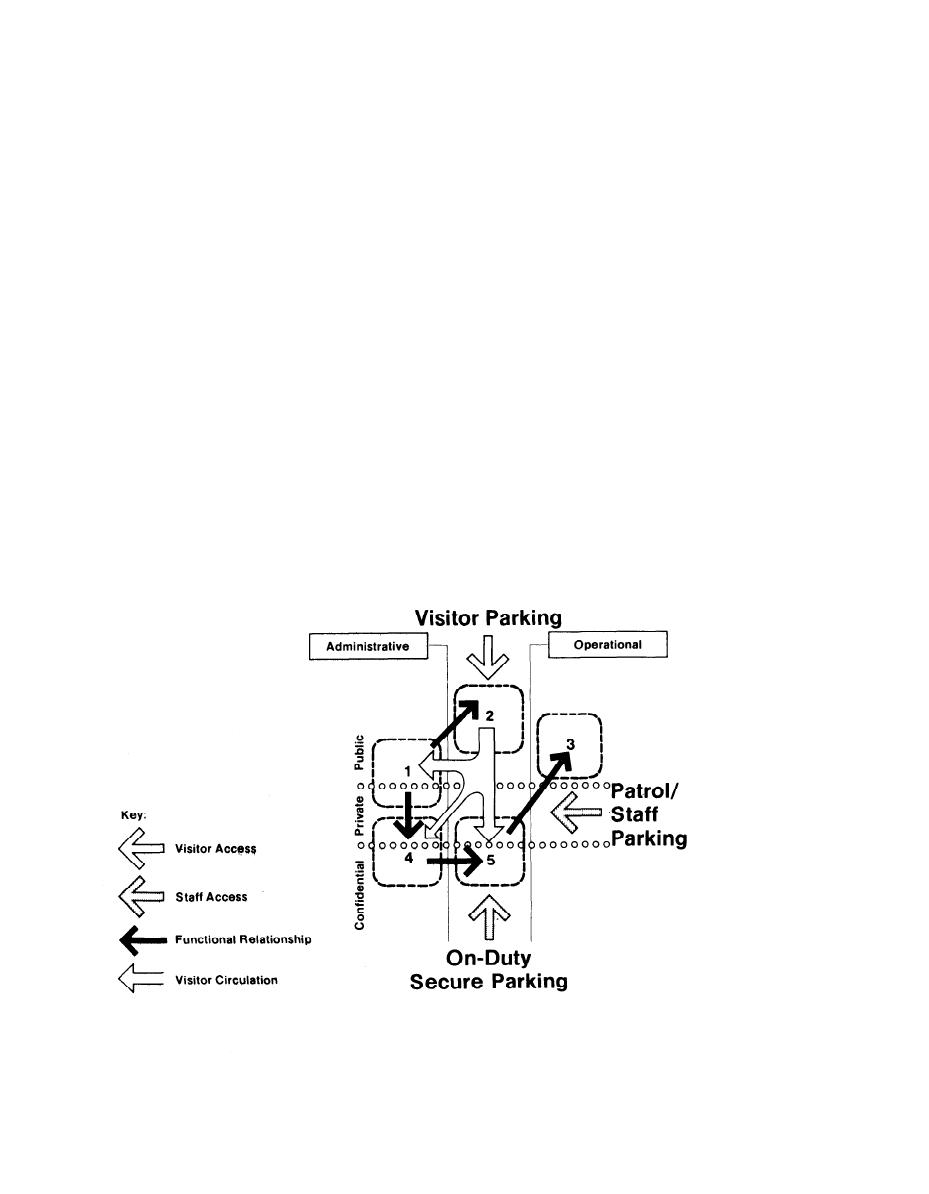
DG 1110 -3-146
Design Guide: Military Police Facilities
December 1979
Example Designs for Army Military Police Facilities: Illustrative Example A
activities and the general functional support areas re-
Zone 1 - Provost Marshal Office: Includes those ac-
quired by individual military police activities. The basic
tivities related to the direction of admin-
development objectives of specific activity areas are:
istrative operations and law enforcement
activities
(1) The achievement of required planning and de-
sign standards and the development of a functionally
Zone 2 - MP Services (Admin.), General Reception
integrated military police facility;
and Information: includes activities related
to the control and direction of visitor traffic
(2) The maintenance of functional integrity within
major component areas;
Zone 3 - M P Services (Ops): Includes those activities
related to community services including
(3) The ability to Separate and control circulation
registration, permits, licenses, and hunting
within and between major activity zones;
and fishing control
(4) The definition of a clear order of movement from
Zone 4- MP Operations (Support Oriented): In-
public to private to confidential activities;
cludes those activities oriented toward the
(5) The ability to provide special environmental and
supervision of uniform motorized and foot
climatic conditions for critical operational activities
patrol, law enforcement, criminal identifica-
with a minimum of cost and effort and with maximum
tion and military police investigations
effectiveness; and
Zone 5- MP Operations (Duty Oriented): Includes
(6) The flexibility to expand operations to change
those police activities oriented toward the
police techniques without a major interruption in law
arrest and processing of offenders, the de-
enforcement activities.
velopment of crime information and intelli-
gence reports, and case development and
f. PHYSICAL AND FUNCTIONAL CHARACTERIS-
processing by military police investigators
TICS OF MAJOR ACTIVITY ZONES The diagram
and physical security inspectors, and mili-
below illustrates the basic physical and functional char-
tary police communicationsand intelligence
acteristics of major activity zones and the functional flow
systems.
and supervisory relationships of component activities
contained within the general activity areas listed below:
Figure 6-1
Physical Relationship Program
6-3


 Previous Page
Previous Page
